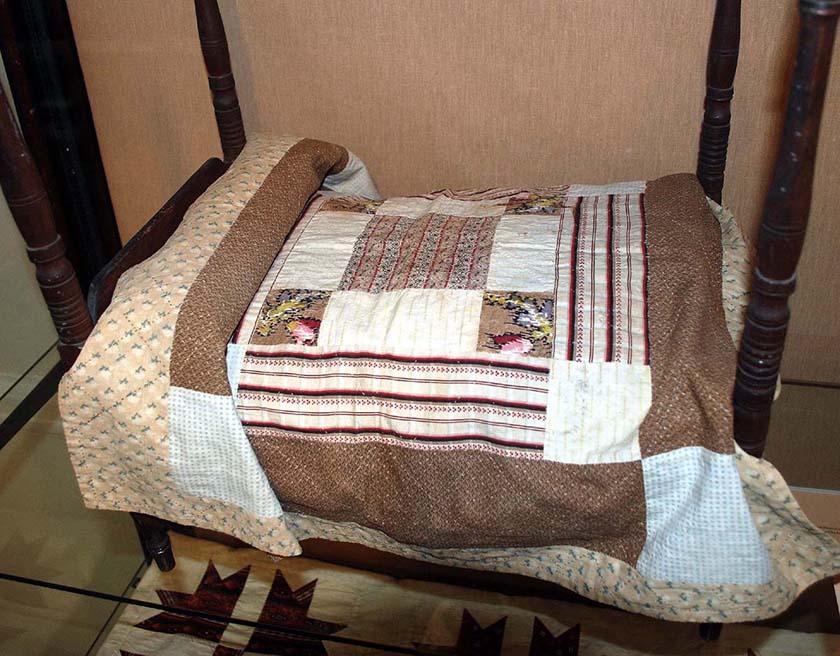This exhibit features over twenty-five bed coverings made between 1800 and 1930 from the OCHS collection. Not only did these quilts and coverlets keep people warm they reflect the skills, artistic creativity and practicality of the makers.
Quilts were one of the more common bed coverings and were most often made by women. Quilts are made up of three layers: a top that is often pieced to create patterns, the middle layer of cotton batting or a woven blanket, and a bottom of plain fabric. The three layers are hand stitched together in an all-over design. Most quilts were made with cotton fabrics, although during the late 19th century Victorian women experimented with silks making what are known as “crazy” quilts.
Coverlets were blankets made from wool and cotton yarn woven into a variety of designs and were most popular in the mid-19th century. Coverlets with simple geometric designs were often woven on looms in the home by women or men. Those with fancy, figured designs which often included national symbols such as eagles or stylized floral designs were woven on large looms with “Jacquard” punch card attachments used to make the patterns. These coverlets were most often made by men who were professional weavers situated in larger communities.
Bedspreads were lightweight covers placed over bed linens and blankets to keep bedding clean and give a bed a finished appearance. The three candlewick bedspreads on display were made in the early 19th century and feature a variety of geometric designs, national symbols, and designs from nature. Candlewick patterns are created using a heavy white cotton yarn, like that used for the wicks of candles that is stitched and looped into designs on white cotton fabric.
Nearly all of the bed coverings were made locally or were brought here by families who settled in the region. A catalog for the exhibit is available in our bookstore.

